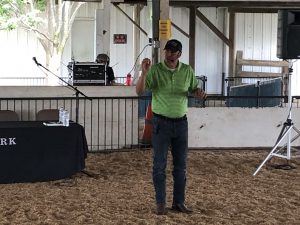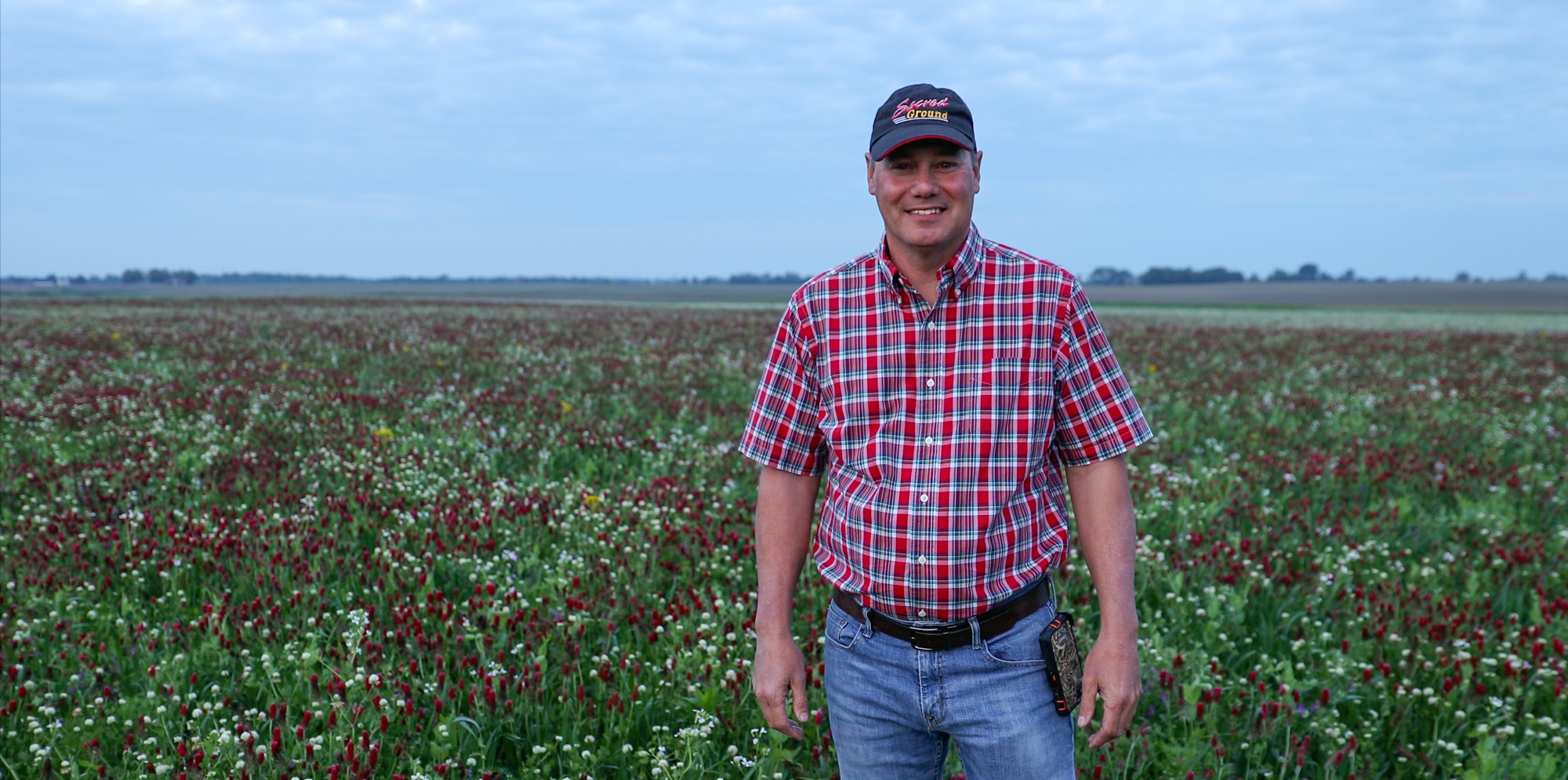Rick Clark, a no-till organic farmer from Indiana, recently encouraged a group of farmers at a field day to move away from synthetic pesticides.
“Eliminate all of these caustic inputs that are harming our bodies. We can farm without all these inputs,” he said. “Let’s figure out how to move forward and make it happen.”
Clark emphasized that farming is about more than building soil health. “This is about building soil health and human health,” he said.
Clark was the keynote speaker at a field day focused on regenerative agriculture organized by soil health consultants Continuum Ag held in Washington, Iowa in June. Nearly 250 people, mostly farmers, from 20 states attended the field day in person, and another 1,000 joined the event online.
Clark said he began with no-till farming and cover crops but now farms organically with no-till and diversified cover crops.
“No-till organic is hard,” he said. “But I am particular about doing things a different way.”
Over time, Clark eliminated the use of synthetic fertilizers and pesticides. “We are at the point of almost $200 an acre in savings of inputs,” he said.
Clark said he was able to eliminate the practice of “burning down” or killing cover crops with herbicides in three years. He now uses a roller crimper to flatten cover crops, which provide a mulch for soybeans to suppress weeds.
Clark encouraged farmers to not till or plow their fields. “You have to eliminate tillage completely. Every time you till you are regerminating weeds,” he said.
Clark sees increasing adoption of regenerative agriculture practices. “We are in such an exciting time. The regenerative movement is gaining traction,” he said.
Scaling regenerative agriculture
Clark joined a panel discussion with Jessica Gnad, executive director of Great Plains Regeneration, Dr. Rick Haney, a scientist with the U.S. Department of Agriculture, Russell Hedrick, a regenerative farmer from North Carolina, and Brian Hora, an Iowa farmer and father of Mitchell Hora, owner of Continuum Ag.
The discussion focused on scaling up regenerative agriculture to more acres.
“Regenerative agriculture is a buzzword,” Gnad said. “People thinks it’s (adopted) on a wide scale, but it’s small. What do we need to scale this movement?
“A support network is really important,” Clark said. “Farmers want to learn from farmers.”
Hedrick agreed. “Focus on a peer network and find someone who is experienced. There are a lot of good consultants,” he said.
Hedrick, a first-generation farmer who grows non-GMO corn and soybeans and other crops on 1000 acres, said he has been able to reduce his input costs by 70-80%, including a $40,000 savings on agrichemicals using regenerative practices such as no-till, cover crops, and diversified crop rotations. He was told that he wouldn’t succeed using regenerative methods but he won an award for corn and soybean yields in North Carolina.
Both Clark and Hedrick acknowledged the soil test developed by Rick Haney as being key to their success and the regenerative farming movement as a whole.
“Rick Haney came up with a test that makes total sense,” Clark said. “You’ve changed this industry.”
Hedrick attributed his savings on input costs partly to Haney’s test.
“My job is to mimic nature in the field,” Haney said. “This is a test that asks your soil ‘what can we do to help you?’ ”
Gnad asked Clark and Hedrick about creating markets for their regenerative agricultural products.
Hedrick sells pastured pork and other products on Facebook. He also grows open pollinated corn that is made into grits. He also sells non-GMO corn to a distillery that makes bourbon.
“Be an advocate for your farm, tell your story,” he said.

Rick Clark speaks to farmers at Continuum Ag field day
Clark grazes cattle on his farm and sells natural meats. He is also growing peas for pea protein manufacturer Puris.
“Don’t let logistics get in the way,” Clark said. “Be creative. There will be more buyers for these (regenerative) products.”
Gnad said her organization is working with farmers in Oklahoma and Kansas to grow an heirloom corn variety for a brewery.
All the speakers recommended that farmers start slow adopting regenerative practices, experiment to see what works best, and be patient.
“You will have failures but it’s worth the time and effort you put in it,” Hedrick said. “Try one thing each year that you can fail at. Don’t bet the farm but take a few acres and try something new.”
“If you don’t try you won’t learn,” Hora said. “Try something and see what works on your farm.”
Haney said farmers may initially see lower crop yields when they first farm no-till with cover crops. “It takes a while for soil microorganisms to show up,” he said. “Expect that, plan for it, and be patient.”
Clark recommended that farmers go slow and easy. “Start easy, get confidence, and add diversity as time goes by,” he said.
“Don’t be afraid to reach out,” Haney said. “Ten years ago, we didn’t think this would work but here we are.”
Gnad concluded the session by saying: “Let’s regenerate.”





